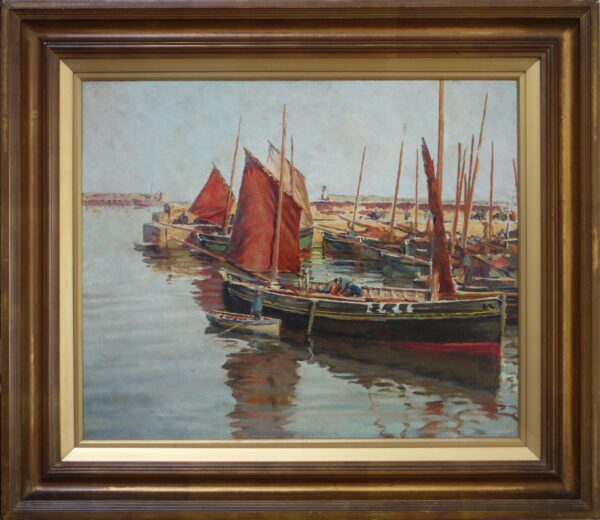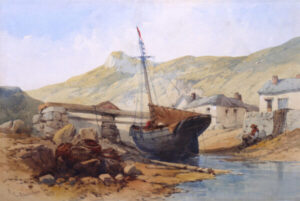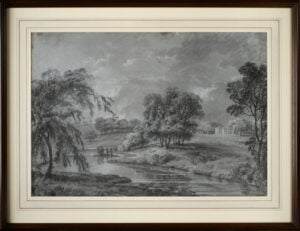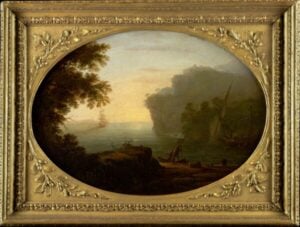Description
The boats are moored up against the old quay which dates back to medieval times and is still there. The pier with the lighthouse on the end is the South pier was built in 1885-6.
For many artists when they die many incomplete or unfinished paintings are sold at auction from their studio’s. In 1947 such a sale was held after the death of Stanhope Forbes. We cannot say for sure this picture is a study by him but there are elements of the painting which bear a striking resemblance to his work.
The Newlyn School was an art colony of artists based in or near Newlyn, a fishing village adjacent to Penzance, Cornwall, from the 1880s until the early twentieth century. The establishment of the Newlyn School was reminiscent of the Barbizon School in France, where artists fled Paris to paint in a more pure setting emphasizing natural light. These schools along with a related California movement were also known as En plein air.
Newlyn had a number of things guaranteed to attract artists: fantastic light, cheap living, and the availability of inexpensive models. The artists were fascinated by the fishermen’s working life at sea and the everyday life in the harbour and nearby villages. Some paintings showed the hazards and tragedy of the community’s life, such as women anxiously looking out to sea as the boats go out, or a young woman crying on hearing news of a disaster. The first of Newlyn’s artists to settle in the town was Walter Langley (1852-1922) who arrived from Birmingham in 1882, followed not long after by his artist friend, Edwin Harris. Stanhope Forbes (1857-1947) arrived in 1884, although he didn’t settle until after his marriage to the Canadian painter Elizabeth Armstrong (1859-1912). Forbes was soon joined by Frank Bramley (1857-1915). Both men had almost immediate success with their Newlyn paintings, and the Newlyn School soon became identified with them. Many more followed.



